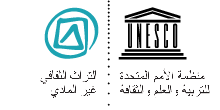Paach ceremony (جاري عملية الترجمة)
سجل في (8.COM) على قائمة التراث الثقافي غير المادي الذي يحتاج إلى صون عاجل
بلد(ان): غواتيمالا
تعريف
Description

- Paach ceremony
- © 2009 by E. Sacayón / FLAAR
عذراً، هذه الصفحة غير متوفرة باللغة العربية
The Paach ceremony is a corn-veneration ritual celebrated in San Pedro Sacatepéquez. The ceremony gives thanks for good harvests in a ritual that highlights the close connection between humans and nature and features prayers in the Mam language. The participants are mostly older farmers, both men and women, with extensive ties to the community and who are recognized as its leaders. Four prayer sayers, or parlamenteros, offer prayers during the ceremony, supported by four auxiliary parlamenteros; meanwhile four godmothers dress ceremonial corncobs and coordinate the preparation and serving of food. The Paach ceremony strengthens the identity of the community of San Pedro and its knowledge and respect for nature and its conservation. The transmission process is both oral and practical, with a group leader instructing new members at workshops and children accompanying their grandparents during the ceremony. In recent years, the Paach ceremony has decreased in frequency, with some young people seeing it as irrelevant, while economic insecurity has caused some bearers to withdraw from the practice. Furthermore, the advanced age of the elders, combined with diminished transmission, might result in the disappearance of this cultural expression.مستندات
عرض الشرائح
فيديو
© 2010 by Ministry of Culture and Sports of Guatemala
يمكن استعراض مقاطع الفيديو هذه (بالإضافة إلى العديد غيرها) من خلال موقع أرشيف اليونسكو للملتميديا”











